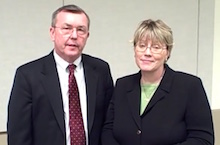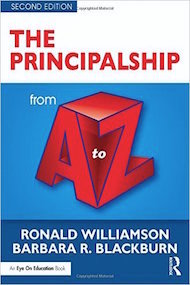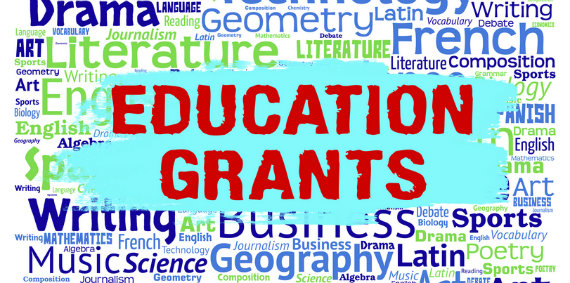Limited Funding Doesn’t Have to Limit You
 By Ron Williamson and Barbara Blackburn
By Ron Williamson and Barbara Blackburn
No school is immune from a future defined by declining, or at the best, stable resources. Schools today are caught between higher expectations for student learning and the reality of fewer human and financial resources to support the enterprise.
Almost universally, the issue is one of how to be both more efficient and more effective. Former Secretary of Education Arne Duncan (2010) described the situation as “the New Normal.”
The Four “R’s” of Resource Management
Most schools have learned that reducing every program a little isn’t very effective. Schools cannot simply cut their way out of a resource deficit. It may be necessary to focus on fewer things and do them really well.
Everything must be on the table – the way a school uses technology, time, space, instructional materials and personnel. Protecting learning opportunities for children must always be the highest priority. Especially important is that the voices of children and families most in need be heard in all of our decision-making processes.
The strategies fall into four categories, the “Four R’s” –
- Reduce
- Refine
- Reprioritize
- Regenerate (Johnston & Williamson, 2014)
Many of these approaches are not easy and may not be enthusiastically embraced by staff, parents, students or even community leaders. But they are most successful when made in a collaborative and inclusive environment, one that welcomes open debate and values consensus building.
1. Reduce
Reductions are often the most common response to declining resources. If necessary, cuts should be made in a fair, reasonable, transparent and humane manner. Reducing the budget most often involves freezing current spending, making across-the-board cuts, identifying targeted reductions or eliminating programs.
Reducing budgets is something no one likes, but almost everyone understands. What people want is information about the impact it will have on them, their programs, or their children.We believe good fiscal decision-making has several elements that you should use when making choices to reduce the budget.
► Provide high-quality information – Help people understand deficits, steps taken to soften the effect, and the data used to make decisions.
► Have a consistent message – People rely on those they trust (including social media friends) for information and not necessarily school leaders. Invest in “internal public relations” to make sure everyone in the school provides the same message about reductions.
► Maintain confidentiality – Be careful what you say and to whom you say it. If reductions target a program or specific personnel, don’t let a leak reveal the information first.
► Address key issues directly – Deal with real concerns as soon as possible. Everyone wants to know if they will lose their job. Make sure messages are accurate and lessen rumors and anxiety.
► Don’t make promises – Statements made early can feel like a commitment, and trust will be damaged if your “promise” can’t be kept.
► Value dissent – Recognize that dissenting opinions are always uncomfortable but important. They can reveal problems that weren’t thought about, and they can give you clues about the resistance you may encounter.
Budget cuts are always tough, and someone will always be upset and angry about the outcome. That’s part of the process.
2. Refine
Schools can also reorganize, streamline or improve efficiency without cutting core programs. The focus is finding the most efficient way to achieve goals rather than making a fundamental change. The Annenberg Institute for School Reform (Barnes, 2004) suggests four areas where refinements work best – human resource use and development, school organization, fiscal and technical resources, and social resources.
► Human resource use and development – There are several general strategies that you can consider to refine the human resource mix in your school (Petrilli, 2012).
- Ask teachers to take on additional responsibilities for additional pay rather than hire additional staff.
- Reduce ancillary positions or specialized personnel.
- Trade down by getting services for lower cost. For example, use county health personnel rather than school nurses.
- Invest in staff by cross-training so teachers can teach in more than one area.
► School organization – Take a look at how your school is organized and the structures that are part of the year. Modest increases in class size, while not desired, are a refinement, as is redesigning the school schedule.
► Fiscal and technical resources – First, spend money on things that work and stop spending money on things that don’t. That may require a tough examination of past practices and a willingness to abandon things that have been in place for a long time. Thoughtfully integrate technology in ways that will strengthen and enhance the program.
Consider the use of online courses to expand and enrich the curriculum. Some schools teach foreign language using Rosetta Stone or some other online software system rather than a traditional classroom. Or arrange on-line tutoring from low-cost college students, retirees or volunteers rather than more costly full-time employees.
► Social resources – Community assets are a tremendous resource. Partnerships are ways of using community assets to increase your resources. Think about potential partners in your community and devote time to cultivating relationships that can benefit your school.
3. Reprioritize school goals
This is perhaps the most complex of the four strategies because of the need to think deeply about the school’s mission and values, and which activities are most closely aligned with the mission. Rather than tinkering with programs, reprioritizing reconsiders whether to maintain programs that don’t align with the school’s mission.
There is no single process that makes reprioritizing easy. Rethinking some of a school’s fundamental operations can lead to new priorities. In many districts that has included thinking about a four-day week, reducing transportation for middle and high school students, changing the schedule, greater use of technology including online courses and online professional development, and securing other funding from local, state or federal grants to pay for some programs or services.
When reprioritizing, it is important to use a process than is inclusive of all interest groups, that is focused on building consensus, and that values disparate points of view.
4. Regenerate
Generating additional resources or finding new sources of funds to support innovation and growth is another strategy. Additional funding can come from business or community partnerships, school foundations, grants, fees and entrepreneurial activity.
► Business partnerships – Business partnerships are typically established between a school, or district, and a local business or a national partner with a local presence. They are most successful when there is a mutually supportive relationship and the partners commit themselves to specific goals and activities benefiting students.
While additional resources are good for a school, they are also good for a business that may have enhanced good will and a stronger presence in the community (Council for Corporate and School Partnerships, n.d.).
► Community partnerships – Community partnerships bring together the resources of local businesses, service clubs, nonprofit agencies, volunteers, churches, colleges and universities – almost anyone with an interest in children and young people. They are a powerful social resource that schools can tap into to support their educational programs.
► School foundations – Many schools and school districts create their own foundations to support educational programs. You will want specialized legal advice when creating a foundation, and many schools we’ve worked with use a local attorney who donates their services.
► Grants and entrepreneurial activity – You can become much more aggressive in seeking grants and contracts. A consortium of five small Oregon districts sought a state grant to pay for adding interactive television so that they could share Spanish, accelerated math and chemistry teachers. The teachers would rotate among the five high schools but be able to interact with students on all campuses. This same consortium shared the costs of a grant writer and by the end of the first year found that the new grants justified the grant writing expense.
Some schools also use entrepreneurial activity to provide students experience managing a business and raising revenue. In some cases they create products for sale outside of school, but most of the time they involve retail operations housed within a school, often food and beverage sales.
Some high schools we’ve worked with have school stores that sell supplies and spirit wear. Others have a coffee shop open before and after school. Still others have a smoothie shop. In several cases, local foundations provided the seed money including equipment and initial inventory to start the business, and local citizens contributed their services to help with financial management.
At one Oregon high school students managed an organic garden that supplied local restaurants, food banks, the school cafeteria and their own produce stand. Students were involved in every aspect of the operations and gained invaluable experience.
A Final Note
Good leaders recognize that stable and declining resources can be a challenge, but rather than becoming disheartened they act in courageous and visionary ways to reconsider how their school uses its human and fiscal resources in support of a quality education for every student.
References
Barnes, F. (2004). Inquiry and action: Making school improvement part of daily practice. Providence, RI: Annenberg Institute for School Reform.
Council for Corporate and School Partnerships (n.d.) A how-to guide for school-business partnerships. Retrieved April 3, 2015 from http://www.nhscholars.org/School-Business%20How_to_Guide.pdf.
Johnston, J. H. & Williamson, R. (2014). Leading schools in an era of declining resources. New York: Routledge Education.
Petrilli, M. (2012). How districts can stretch the school dollar. Policy Brief. Dayton, OH: Thomas B. Fordham Institute.
Williamson, R. & Blackburn, B. (2016). The Principalship from A to Z (2nd Ed.). New York: Routledge Education.

Barbara Blackburn is a best-selling author of 15 books including Rigor is Not a Four Letter Word. A nationally recognized expert in the areas of rigor and motivation, she collaborates with schools and districts for professional development. Barbara can be reached through her website or her blog. She’s on Twitter @BarbBlackburn. Her latest book is Motivating Struggling Learners: 10 Ways to Build Student Success.







































